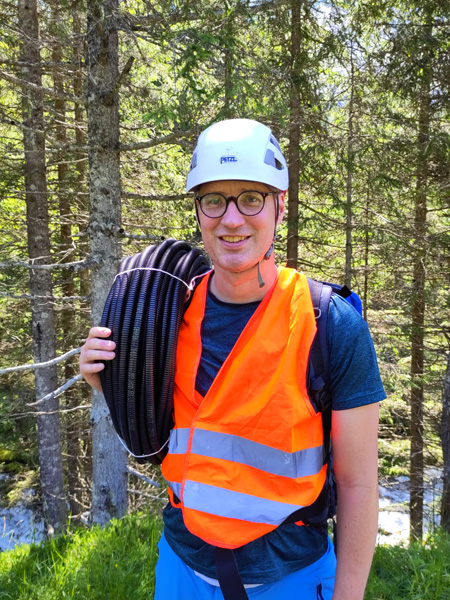9 July 2025—Fabian Walter, a senior scientist at the Swiss Federal Institute for Forest, Snow and Landscape Research WSL, is a member of the program committee for the upcoming SSA Environmental Seismology meeting.
 The October conference “has a balance of a strong group of high-level researchers and the right size where you actually have a chance to meet and discuss your work with these people,” he said in a recent interview with SSA.
The October conference “has a balance of a strong group of high-level researchers and the right size where you actually have a chance to meet and discuss your work with these people,” he said in a recent interview with SSA.
We asked him more about his keynote talk and what’s he’s looking forward to at the meeting.
SSA: Why should researchers working in this field attend the SSA topical meeting?
Walter: Usually we have at AGU and EGU … dedicated sessions on environmental seismology. But my feeling is the quality, the program and the attending speakers will be particularly strong at SSA. I would have maybe not gone to a different meeting on environmental seismology, but this is a particularly strong group.
SSA: What research will you be discussing at the meeting?
Walter: My keynote will be about basal processes beneath glaciers, in the cryoseismology section. For the first 15 years of my career, I worked mostly on cryoseismology. But recently I’m looking more and more at mass movement seismology, so more natural hazards. I also have a poster on this recent event in Blatten [Switzerland], a landslide that destroyed an entire village. [Browse the meeting’s preliminary oral program]
SSA: What other parts of the program are you looking forward to?
Walter: A lot of seismology is about measurement, modeling and data processing techniques, and I think it’s always important to look at what people do. For example, there’s a huge amount of overlap between induced seismicity in the Earth and basal processes beneath glaciers, where we also have very high water pressures that do analogous things to when people stimulate geothermal fields. I’ve published a paper on induced seismicity in the past just because I was using waveform modeling techniques in cryoseismology that were also useful in induced seismicity. I think you can benefit by going to each and every one of these talks, honestly.
SSA: What are some of the other benefits of this style of topical meeting?
Walter: For each session there’s a discussion time planned, and I find this extremely helpful. When you have all the fresh impressions of the talks, you then think about what can be done next, what could we do? You perhaps have some sparking ideas as you were seeing some news from your colleagues … how can we keep this momentum going?
I think also this is the ideal format for young people who are learning and presenting their first results, and for networking.
